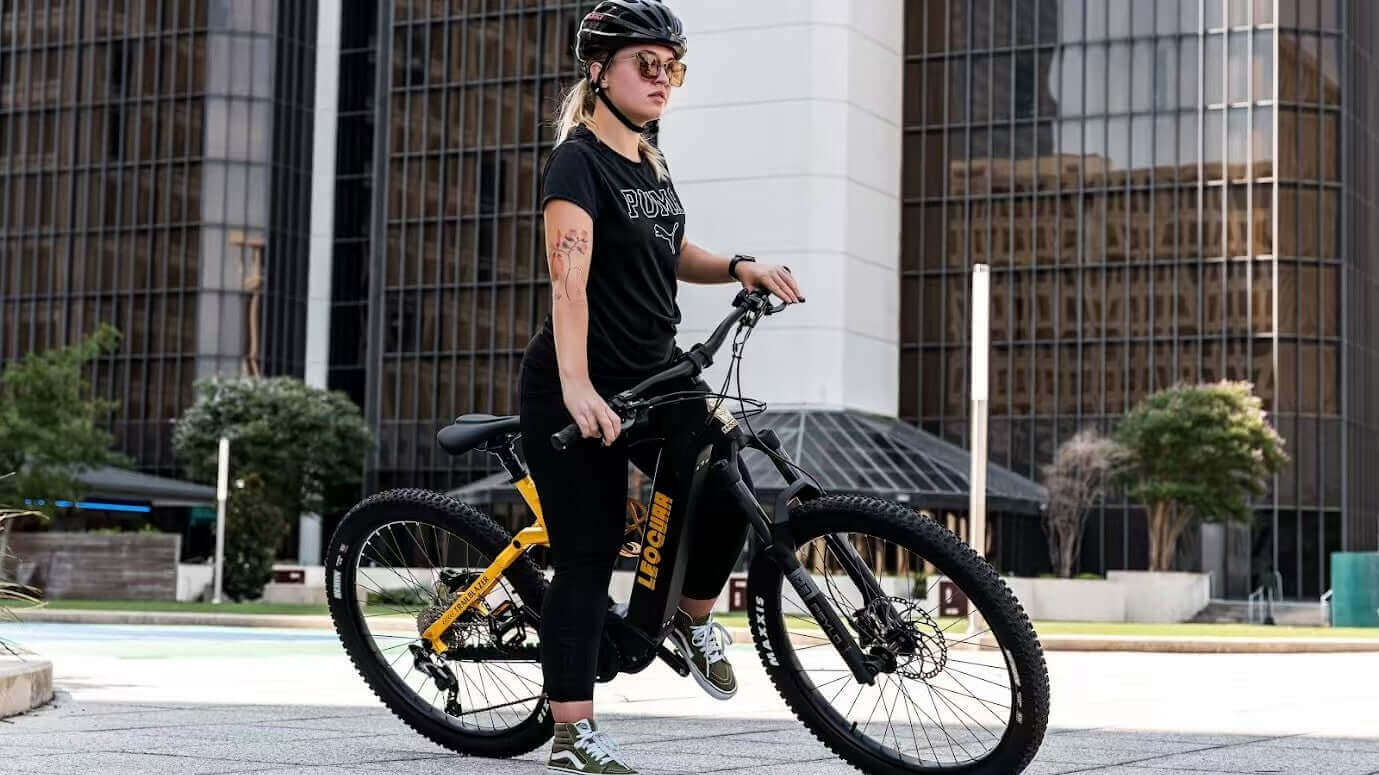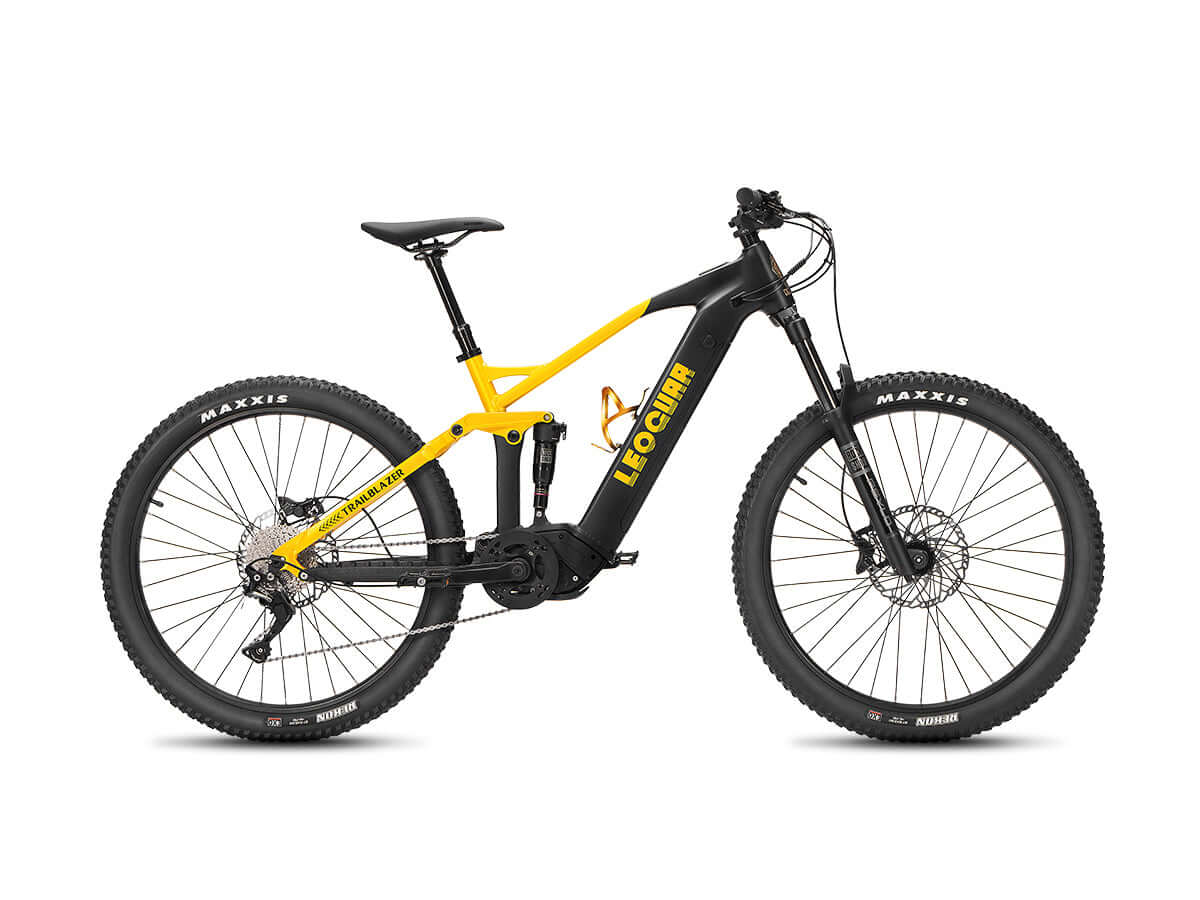
How Fast Does a 500W Electric Bike Go? Top Speed by Class
A 500 watt ebike is popular for good reasons. It offers a great mix of power, efficiency, and usefulness in real life. The question about speed has both a simple and complex answer.
On paper, a 500w electric bike will usually have a top speed between 20 mph (32 km/h) and 28 mph (45 km/h) with motor help. But that number doesn't tell the whole story.
The actual top speed you get depends mainly on the e-bike's legal class and many real-world factors. This guide will give you the direct answer you want, explain the important e-bike class system that sets legal speed limits, look at other things that affect your true speed, and help you understand if a 500W e-bike has the performance you need.
Typical Motorized Electric Bike Top Speed
Let's look at expected speeds based on how you use the motor. A 500w electric bike has two main help modes, and their top speeds are usually set by rules in North America.
When using only the throttle, where you don't pedal, you can expect a top speed of up to 20 mph (32 km/h). The motor does all the work and moves you forward with a simple push of a lever or twist of a grip. This is the legal limit for a Class 2 e-bike's throttle.
When using pedal assist (PAS), where the motor boosts your own pedaling effort, a 500W e-bike can reach a top speed of up to 28 mph (45 km/h). This higher speed is typical of a Class 3 e-bike. In this mode, you actively take part in the ride, and the motor gives a powerful boost to get you to speed quickly and keep it with less effort, especially against wind or on slight hills.
Some riders choose to "unlock" or remove limits on their e-bikes for off-road use, which can push the 500w electric bike top speed beyond 30 mph on flat ground. But this comes with big legal and safety issues.
Understanding E-Bike Classes
The most important factor that determines your ebike legal top speed is its class. In the United States and many parts of Canada, a three-class system controls e-bikes, making sure they can be used on bike paths and roads without needing the same registration as a moped or motorcycle. A 500W motor is powerful enough to fit into any of these three classes.
| Class | Max Assisted Speed | Throttle | How It Works |
|---|---|---|---|
| Class 1 | 20 mph (32 km/h) | No | The motor provides assistance only when you are actively pedaling. It cuts off at 20 mph. |
| Class 2 | 20 mph (32 km/h) | Yes | The motor can be engaged via a throttle up to 20 mph, and also provides pedal assist up to 20 mph. |
| Class 3 | 28 mph (45 km/h) | Permitted (but limited) | The motor provides pedal assist up to a zippy 28 mph. If a throttle is present, it must be limited to 20 mph. |
A 500W motor in a Class 1 or Class 2 bike will feel quick and speed up fast to its 20 mph limit. Where the 500W motor really shines is in the Class 3 group. It has enough power to easily and efficiently help a rider to that 28 mph limit, making it a perfect tool for commuters who want to keep pace with city traffic. A great example is the Aventon Pace 500.3, a popular Class 3 e-bike with a 500W motor that gives pedal assist up to 28 mph.
Understanding which class a 500W e-bike falls into is important, as it defines not only its top speed but also where you can legally ride it.
500W Electric Bike vs Higher Wattage: Speed Comparison
While we're focused on the 500w electric bike top speed, it's helpful to understand how this motor size compares to others. Wattage doesn't just impact top speed; it's a main sign of torque, which means acceleration and hill-climbing ability.
250W-350W Motors: These are often found on lightweight, simple e-bikes and are the standard in Europe due to rules. They give a gentle, helpful boost and are great for keeping speed on flat ground. However, they can feel weak on steep hills or for heavier riders, requiring more physical effort from the cyclist. Their legal top speed is usually limited to 20 mph.
500W Motors (The Sweet Spot): As many manufacturers like Mokwheel and qiolor note, 500W motors represent the perfect balance. They offer a big jump in acceleration and climbing power over 350W models. They can handle moderate to steep hills with confidence and give the power needed to reach the 28 mph Class 3 speed limit without feeling strained. This performance comes without the major penalty to battery range or the big cost increase of more powerful motors, making it the ideal choice for most commuters and fun riders.
750W+ Motors: These are the powerhouses. A 750W or 1000W motor delivers huge torque, resulting in exciting fast acceleration and the ability to conquer even the steepest city hills without breaking a sweat. While their legally assisted top speed is often still capped at 28 mph, they get you there much, much faster. The trade-off is increased weight, higher cost, and much faster battery use.
In the end, a 500W motor gives more than enough power for most riders to reach the legal speed limits with authority.
Real-World Factors That Affect 500W Electric Bike Top Speed
The motor wattage and the bike's class set the performance ceiling, but your actual, real-world speed on any given ride is determined by a mix of physics and equipment. Think of the 500W motor as your engine; these are the factors that create drag and resistance for that engine to overcome.
Rider Weight and Cargo: The total weight the motor has to move is a main factor. A lighter rider will speed up faster and keep a higher top speed with less effort than a heavier rider carrying a full backpack.
Terrain and Elevation: Riding on a flat, smooth bike path is where you'll most easily hit your bike's top speed. As soon as you add an incline, gravity works against you. A 500W motor is a good hill-climber, but your speed will drop on steep climbs.
Tire Type and Pressure: Wide, knobby fat tires give amazing grip and cushioning but have high rolling resistance, which takes away speed. Smoother, narrower commuter tires are far more efficient on pavement. Equally important is tire pressure; under-inflated tires create more drag and can reduce your top speed and range.
Battery Voltage and Charge: Not all 500W systems are equal. A 48V battery can deliver power to a 500W motor more efficiently than a 36V battery. As we explore in depth in our guide to ebike amps and voltage, this higher voltage can mean a more responsive feel and better ability to sustain top speed. Also, a fully charged battery delivers maximum voltage and power, while you may notice a slight performance drop as the battery level gets very low.
Your Pedaling Input: On a Class 1 or Class 3 e-bike, your legs are part of the equation. A strong rider pedaling at a high speed can help the motor work more efficiently and may even be able to push the bike beyond the 28 mph motor cut-off speed using their own power.
Wind Resistance: Air flow becomes a major factor at speeds above 15 mph. An upright, comfortable riding position creates a large profile that catches the wind like a sail. A more aggressive, forward-leaning posture can greatly reduce this drag, making it easier to achieve and hold higher speeds.
Drivetrain Maintenance: A clean, properly lubricated chain and gears run with less friction, transferring more of your and the motor's power to the rear wheel. A dirty, neglected drivetrain wastes energy and can lower your effective top speed.
Unlocking Your 500W Electric Bike: Speed Mods & Legal Risks
Many e-bikes are electronically limited to comply with the class system. Through the bike's display settings, it's sometimes possible to "unlock" or remove the speed limiter. For a typical 500W e-bike, this could potentially increase the motor-assisted top speed to the 25-32 mph range on flat ground, depending on the specific bike and the factors listed above.
However, we must give a strong word of caution. Doing this carries big consequences:
Legality: Unlocking your e-bike to exceed 28 mph (or 20 mph via throttle) means it no longer qualifies as an e-bike. In the eyes of the law, it becomes an unlicensed and unregistered motor vehicle. Riding it on public roads, bike lanes, or trails is illegal and could result in fines and confiscation.
Safety: The bike's parts—especially the brakes, frame, and tires—were designed and tested for the speeds of its designated class. Operating at higher speeds puts you and the equipment under greater stress, increasing the risk of part failure.
Warranty: Without exception, unlocking your e-bike will void your manufacturer's warranty. If any part of the electronic system fails, you will be responsible for the full cost of repair.
Insurance: If you are involved in an accident, your liability insurance may be voided if it is found you were operating a modified, illegal vehicle.
Unlocking should only ever be considered for use only on private property where you have the landowner's clear permission.

Is 500W Enough? Top Speed vs Everyday Use
So, is a 500w electric bike top speed fast enough for you? For most riders, the answer is a strong yes.
A 500W motor hits the perfect spot of performance, efficiency, and value. It gives the power to make your daily commute faster and more enjoyable, easily reaching the Class 3 speed limit of 28 mph with pedal assist. It has the torque to flatten hills that would be a major challenge on a non-electric bike or a lower-powered e-bike. It delivers a fun, zippy ride for weekend cruising without the scary acceleration or rapid battery drain of a 750W+ motor.
If you are a commuter looking to keep up with city traffic, a Class 3 500W e-bike is an exceptional tool. If you are a recreational rider who wants a powerful boost for hills and a helpful throttle for relaxed cruising, a Class 2 500W e-bike is a perfect companion. The power is plenty, the speed is practical, and the overall experience is one of pure cycling joy.
Frequently Asked Questions
1. What is the maximum speed of a 500W e-bike?
A 500W e-bike typically reaches 20-28 mph depending on its class. Class 2 models max out at 20 mph with throttle, while Class 3 models can reach 28 mph with pedal assist.
2. Can a 500W e-bike go uphill easily?
Yes, a 500W motor provides excellent hill-climbing ability for most riders and terrain. It offers a good balance of power and efficiency, making moderate to steep hills manageable without excessive battery drain.
3. Is 500W better than 350W for e-bikes?
A 500W motor offers significantly better acceleration and hill-climbing power than a 350W motor. It can comfortably reach higher speed limits and provides more torque, making it ideal for commuting and varied terrain.
4. How does rider weight affect 500W e-bike speed?
Heavier riders and cargo will reduce top speed and acceleration on a 500W e-bike. The motor has to work harder to move more weight, which affects both performance and battery life.
5. Are 500W e-bikes legal everywhere?
500W e-bikes are legal in most places when they comply with local class regulations. However, unlocking or modifying them to exceed speed limits makes them illegal for public roads and bike paths.







































Leave a comment